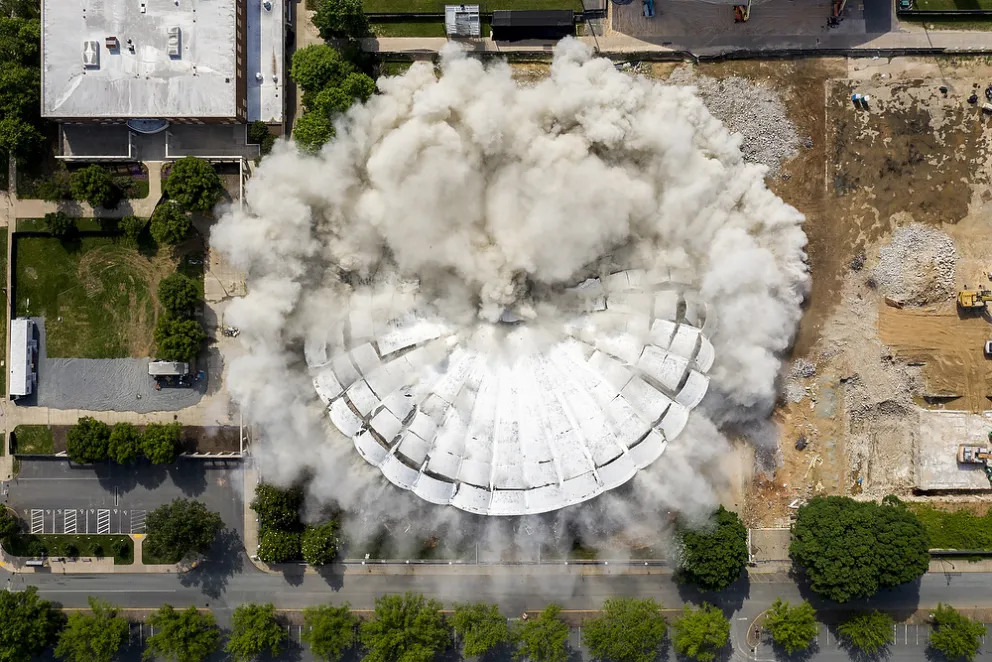
Text and photos by Sanjay Suchak
Sanjay Suchack is University Photographer at the University of Virginia. He had a once-in-a-career opportunity to cover the implosion of Virginia's former basketball arena, University Hall, commonly known as U-Hall.
When I first arrived on Grounds (we call our campus Grounds) I couldn’t help but notice this large and looming structure. It was so out of place at a university where white columns are de rigueur. It looked like a clam or a spaceship, its white paint on the rubberized concrete roof peeling, the mid-century architecture so out of place.

Above: The white dome of University Hall, the university’s former basketball arena, which had replaced by the newer and more conventional John Paul Jones Arena.
Opened in 1965 and constructed from thousands of tons of concrete and steel cabling it rose above the fields just outside of Charlottesville, a town where back then a four story building would be considered a skyscraper. Its capacity was 8,457 fans, but that was often ignored and the highest recorded attendance was 11,174, after which they stopped counting to not invoke the ire of the fire marshal. During its time it played host to the women’s and men’s basketball teams, the sensation of Ralph Sampson in the mid 80s as well as hundreds of student events, concerts, and other activities. The final game in the arena was March 5, 2006. We did a nice piece on the history of the building before the demolition.
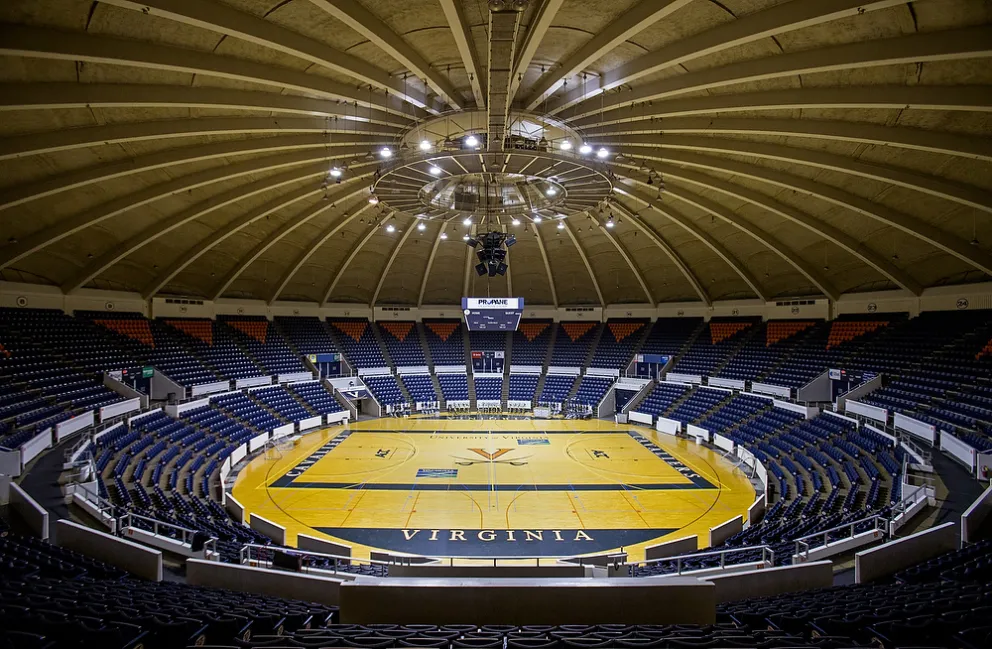
By the time I was hired as the University Photographer in 2013 the stands had been silent for some time. Teams occasionally used the court for practice or athletes practiced running stairs indoors. For the most part though, the building was slowly decomposing, the asbestos inside making the cost to retrofit too high. Sometimes I would startle the family of squirrels who had taken up residence in the arena, who ran the circular halls as if it was a normal thing for squirrels to do. In 2015 a piece of concrete fell from the ceiling onto the floor, and the arena bowl was closed for good.
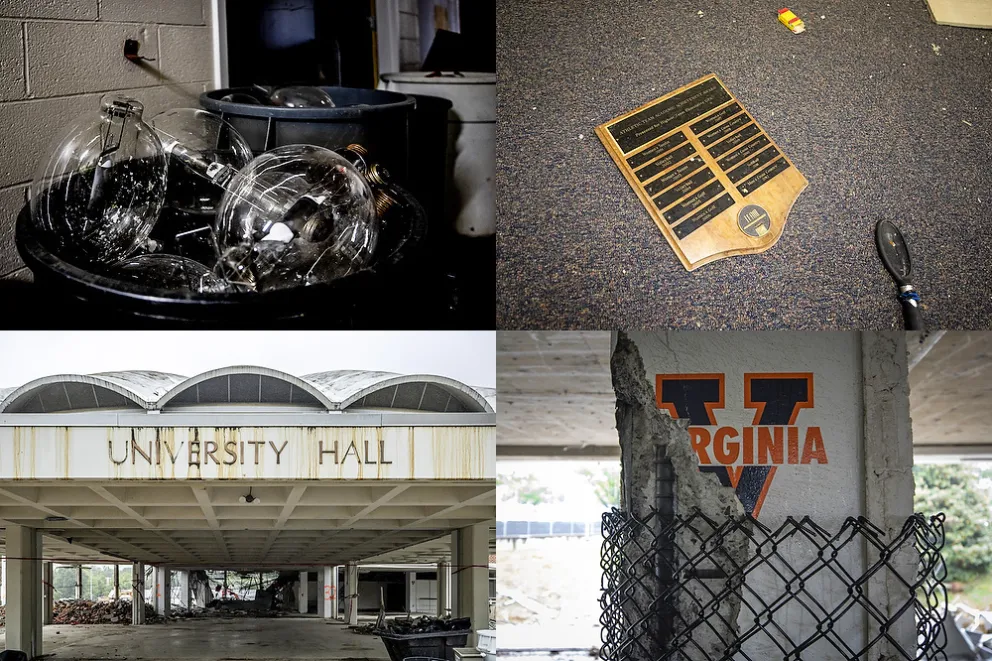
In 2017 the UVA Board of Visitors decided the building’s time was up. What was once a remote outpost of the university is now a much more highly populated athletics campus and the space was needed. Besides, the building was a hazard now. They voted to allocate funds for the demolition and the clock was running on capturing the finals days of U-Hall.
In terms of covering the demolition, it wasn’t as straightforward as one might think. With an old arena there are a significant amount of memories and nostalgia tied to it. Some at the university thought that it should be done in silence, lest we raise the ire of those who wished to save U-Hall. Others, myself included, thought that this posed a unique opportunity to capture the demolition as well as celebrate the past. Thankfully the latter camp won out. In terms of buy-in from my office, I am very lucky here in that I have complete creative license to chase any story I deem valid. So I just went to work.
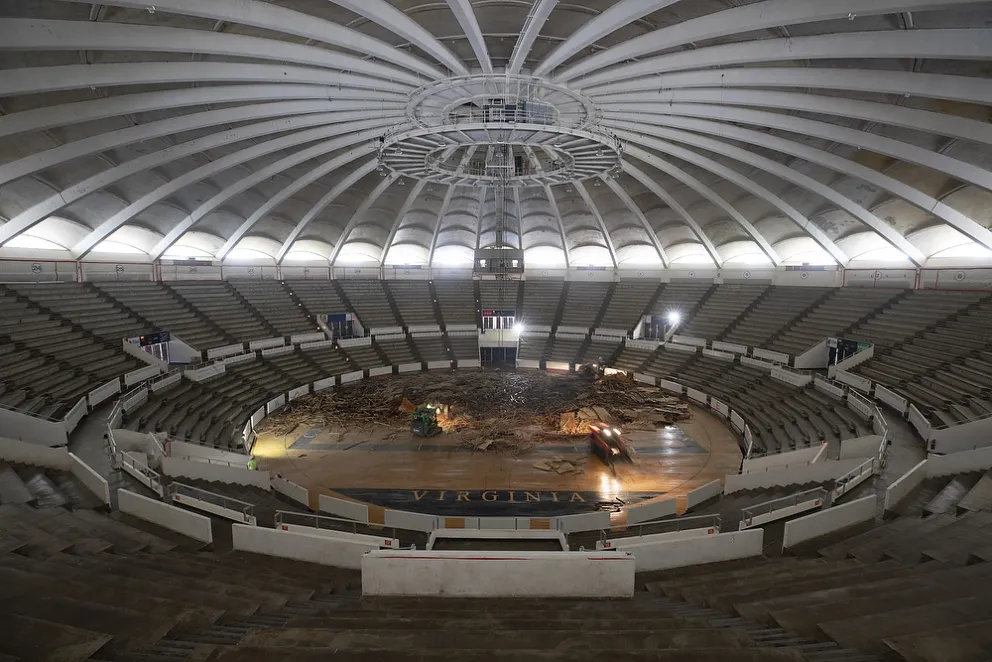
After securing the blessing from athletics I was then given the contact information for the project manager for facilities management. After a building has a contract granted for demolition it gets turned over to the demolition company, it technically becomes their property. The project manager however agreed to take me over there as often as I’d like to photograph the building and work with the demolition company to document all aspects of the interior demolition and the eventual implosion. This is where I think good relations with all types of people in the university community is essential. Without those good relations I wouldn’t have been able to have this type of assistance.
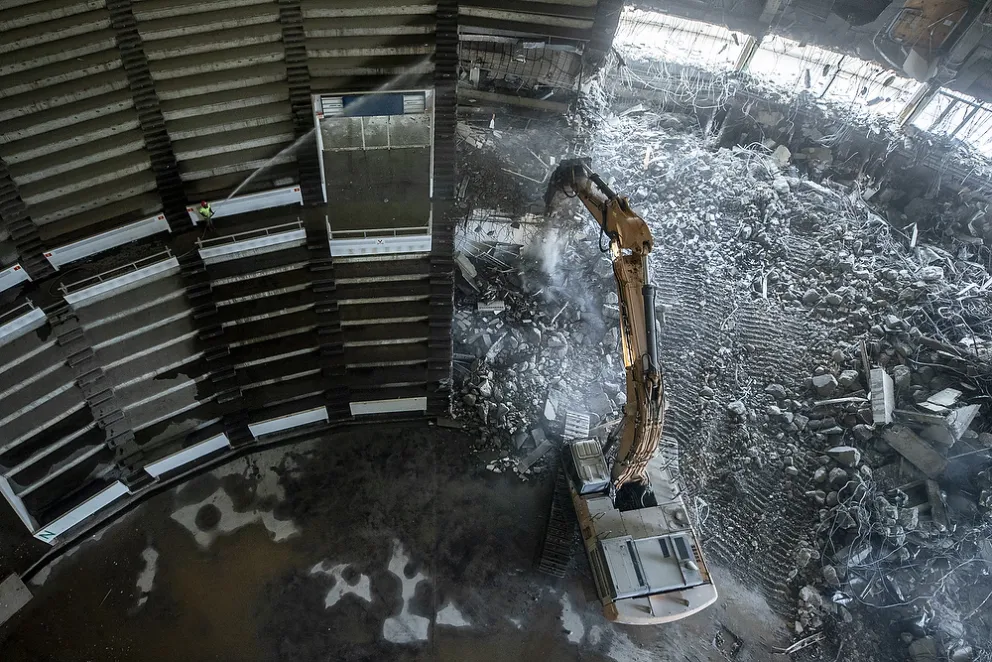
I started out with bi-weekly visits to the site. Usually armed with a wide-angle lens and a tripod I tried to capture the building as the layers were stripped away. First the signage and decorations, then the lockers, eventually the seats and scoreboard. The pace picked up significantly to twice-a-week visits when they began demolishing the seating and walls. Eventually, after six months. It was ready for implosion.
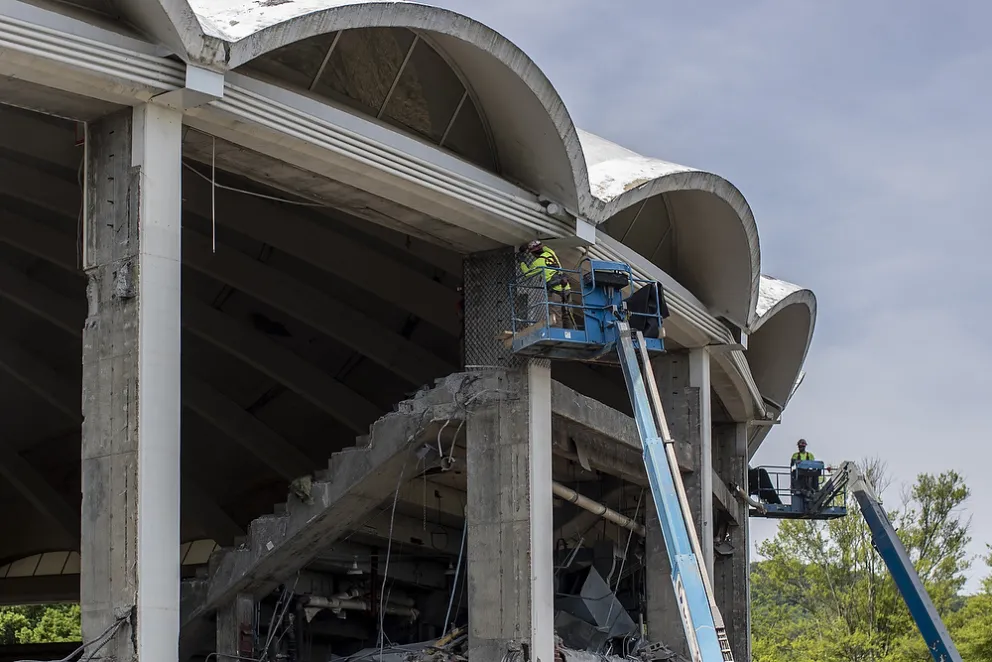
The process for implosion is fascinating and fairly complex. As I mentioned before the building looked like a clamshell. To support that type of roof the building had to be wrapped in thousands of feet of steel cable. This held the entire arena together and also made traditional demolition impossible. The demolition contractor decided that the interior concourse and seating would be cleared out from 75% of the bowl and all exterior and interior walls removed so that when the explosives detonated the building would fall a certain way and push the dust out toward the athletic fields.
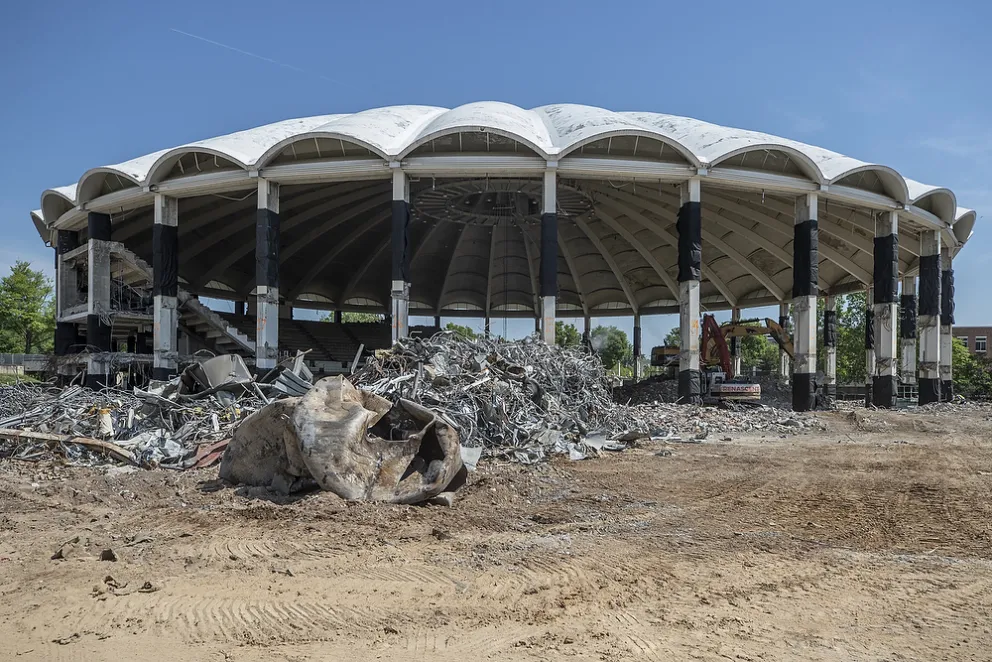
Covering the implosion involved gathering ever piece of manpower you can muster. We only get one chance. We decided on having 5 drones flying above and around (2 from our office, 3 from the demolition contractor) three photographers, and several Go-Pro cameras left running inside the implosion zone. Our video team interviewed famous UVA Basketball Player Ralph Sampson (who pushed the demolition plunger) to get soundbites for the video we would produce with the drone footage. Our photography team (plus my girlfriend helping out) captured the implosion from three separate locations just outside the implosion zone.
With the drones, we all met the day before to pre-program our flights together. With the cooperation of Air Traffic Control, who was aware of the implosion and our drone operators, we successfully had 5 drones flying in close proximity with no incidents or loss of signal. We also heavily control drone flights over UVA property and banned for safety all other drones other than our five drones.
I would be lying if I said I slept well the night before. I’ve never photographed an implosion, or anything else of this magnitude that can’t be repeated. Heck, I hate photographing weddings lest I screw up the important moments. But, I was confident I planned enough and had enough backup contingencies that nothing would go wrong.

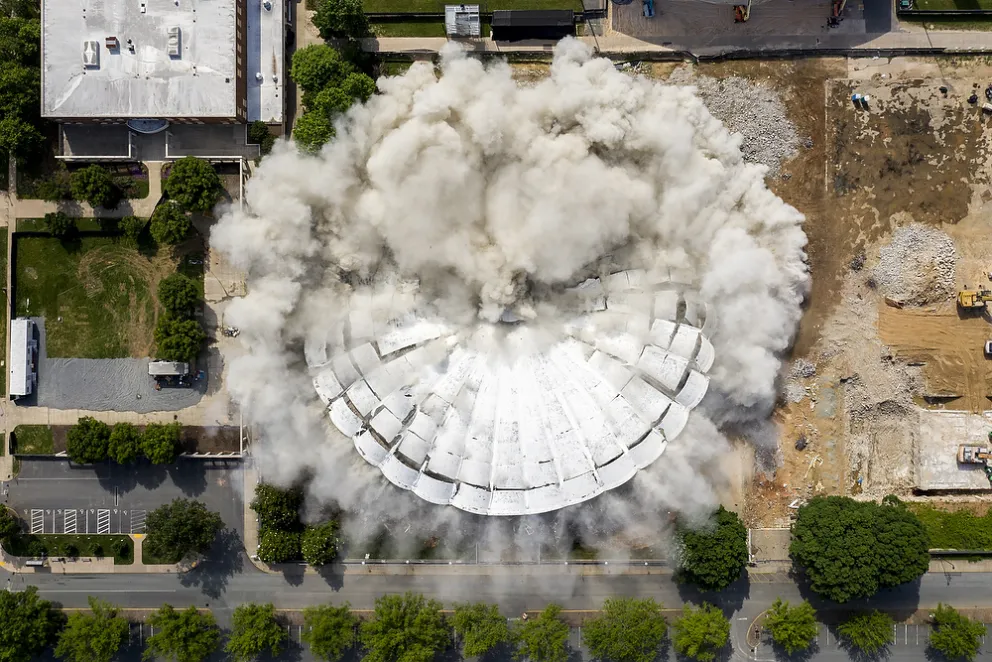
At 10am on May 25, 2019 the first of many explosions went off. It took 13 seconds to bring the building to the ground. After months of preparation for the implosion we were ready and captured the whole thing. The result was a photographic essay of the final year of U-Hall and a great video capturing the sentiments of Ralph Sampson on the end of “Ralph’s House”
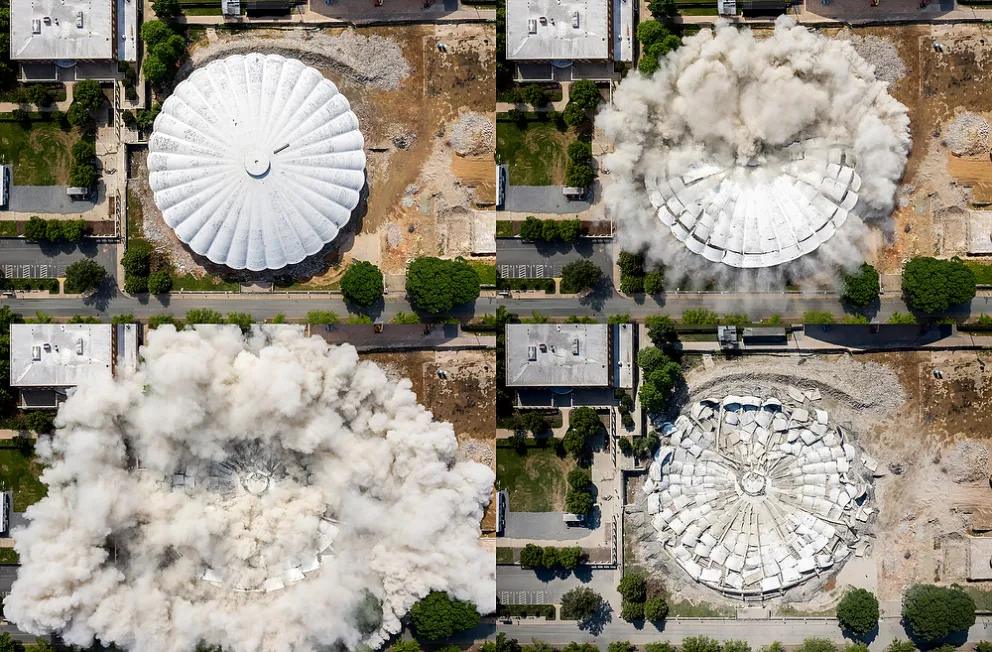
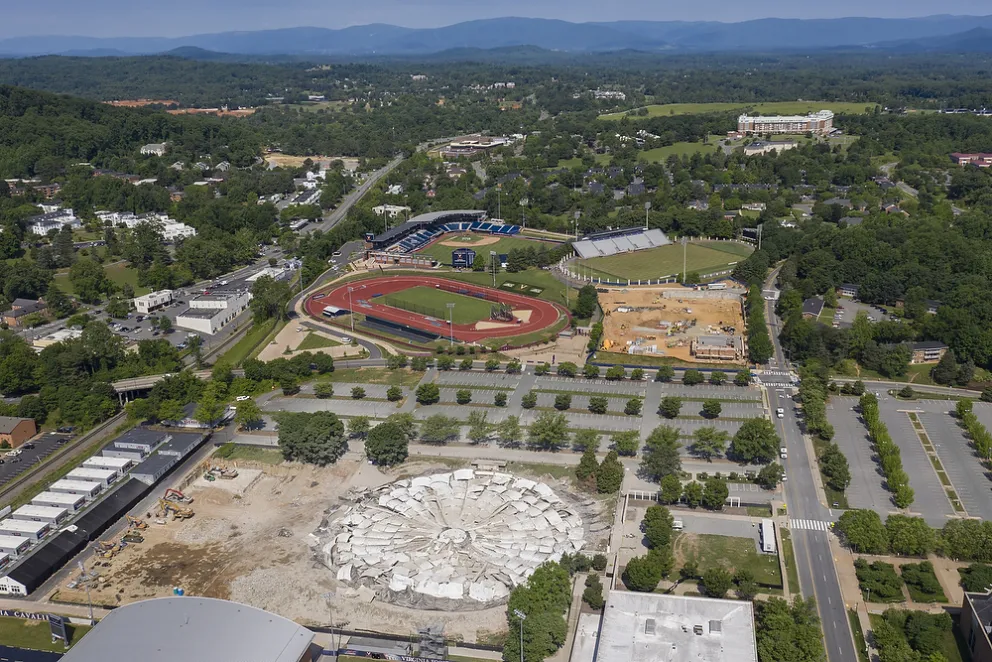
The location where the arena was will be turned into athletic fields to help nurture the university’s growing athletics program. Our photos and those of photographers who came before us will remind those that come later of the history of what happened in that building.
___________________________________________________
“Why was Cinderella kicked off the basketball team? She ran away from the ball!” Send stories, story ideas, comments, critiques or even jokes to editor Matt Cashore, mcashore@nd.edu